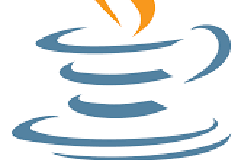| Unit | Unit Name | Section |
| I | Computer Systems and Organisation | Basic Computer Organisation
Types of Software Operating System Boolean Logic Number System Encoding Schemes |
| II | Computational Thinking and Programming -1 | Introduction to Problem-Solving
Familiarization with the Basics of Python Programming Knowledge of Data Types Operators Expressions, Statement, Type Conversion, and Input/output Errors Flow of Control Conditional Statements Iterative Statement Strings Lists Tuples Dictionary Introduction to Python Modules |
| III | Society, Law, and Ethics | Digital Footprints
Digital Society and Netizen Data Protection Cyber Crime Cyber Safety Malware E-waste management Information Technology Act (IT Act) Technology and Society |
between number systems ● Encoding Schemes: ASCII, ISCII, and Unicode (UTF8, UTF32)
lowcharts, simple programs: e.g.: absolute value, sort 3 numbers and divisibility of a number. ● Iterative Statement: for loop, range(), while loop, flowcharts, break and continue statements, nested loops, suggested programs: generating pattern, summation of series, finding the factorial of a positive number, etc. ● Strings: introduction, string operations (concatenation, repetition, membership and slicing), traversing a string using loops, built-in functions/methods–len(), capitalize(), title(), lower(), upper(), count(), find(), index(), endswith(), startswith(), isalnum(), isalpha(), isdigit(), islower(), isupper(), isspace(),lstrip(), rstrip(), strip(), replace(), join(), partition(), split() ● Lists: introduction, indexing, list operations (concatenation, repetition, membership and slicing), traversing a list using loops, built-in functions/methods–len(), list(), append(), extend(), insert(), count(), index(), remove(), pop(), reverse(), sort(), sorted(), min(), max(), sum(); nested lists, suggested programs: finding the maximum, minimum, mean of numeric values stored in a list; linear search on list of numbers and counting the frequency of elements in a list. ● Tuples: introduction, indexing, tuple operations (concatenation, repetition, membership and slicing); built-in functions/methods – len(), tuple(), count(), index(), sorted(), min(), max(), sum(); tuple assignment, nested tuple; suggested programs: finding the minimum, maximum, mean of values stored in a tuple; linear search on a tuple of numbers, counting the frequency of elements in a tuple. ● Dictionary: introduction, accessing items in a dictionary using keys, mutability of a dictionary (adding a new term, modifying an existing item), traversing a dictionary, built-in functions/methods – len(), dict(), keys(), values(), items(), get(), update(), del(), del, clear(), fromkeys(), copy(), pop(), popitem(), setdefault(), max(), min(), sorted(); Suggested programs: count the number of times a character appears in a given string using a dictionary, create a dictionary with names of employees, their salary and access them. ● Introduction to Python modules: Importing module using ‘import ’ and using from statement, importing math module (pi, e, sqrt(), ceil(), floor(), pow(), fabs(), sin(), cos(), tan()); random module (random(), randint(), randrange()), statistics module (mean(), median(), mode()). Unit III: Society, Law and Ethics ● Digital Footprints ● Digital Society and Netizen: net etiquettes, communication etiquettes, social media étiquettes ● Data Protection: Intellectual property rights (copyright, patent , trademark), violation of IPR(plagiarism, copyright infringement, trademark infringement), open source software and licensing (Creative Commons, GPL and Apache) ● Cyber Crime: definition, hacking, eavesdropping, phishing and fraud emails, ransomware, cyber trolls, cyber bullying ● Cyber safety: safely browsing the web, identity protection, confidentiality ● Malware: viruses, trojans, adware ● E-waste management: proper disposal of used electronic gadgets. ● Information Technology Act (IT Act) ● Technology and society: Gender and disability issues while teaching and using computers











